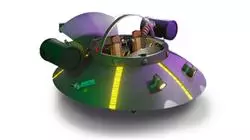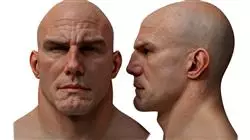University certificate
The world's largest faculty of video games”
Introduction to the Program
You will be the best animator in your company when you finish this qualification"

Although in the technical and visual department we usually talk about graphics as the most essential element of a video game, in reality, there are many others whose importance is at least equal. One of them is animation. The animation determines the movement of the characters and their fluidity, while helping to make their interaction with the rest of the elements realistic.
For that reason, a bad animation can ruin the gaming experience. That’s why the big video game companies around the world know that they have to have the best animators possible, and so professionals who want to participate in these companies need a high level of specialization.
That is what this Postgraduate diploma in Animation and Rigging offers, in-depth and very specific knowledge that will help students to achieve their professional goals, thanks, in part, to its 100% online teaching methodology, which adapts to the circumstances of each individual.
Animation and Rigging are essential in any video game today: specialize in this area and become a highly sought-after professional”
This Postgraduate diploma in Animation and Rigging contains the most complete and up-to-date educational program on the market. The most important features include:
- The development of practical cases presented by experts in Animation and Rigging applied to video games
- The graphic, schematic, and practical contents with which they are created, provide scientific and practical information on the disciplines that are essential for professional practice
- Practical exercises where self-assessment can be used to improve learning
- Special emphasis on innovative methodologies
- Theoretical lessons, questions to the expert, debate forums on controversial topics, and individual reflection assignments
- Content that is accessible from any fixed or portable device with an Internet connection
This qualification is what you need to advance professionally"
The program's teaching staff includes professionals from the sector who bring to this program the experience of their work, in addition to recognized specialists from prestigious societies and leading universities.
The multimedia content, developed with the latest educational technology, will provide the professional with situated and contextual learning, i.e., a simulated environment that will provide immersive training programmed to learn in real situations.
This program is designed around Problem-Based Learning, whereby the professional must try to solve the different professional practice situations that arise throughout the program. This will be done with the help of an innovative system of interactive videos made by renowned experts.
Big companies in the industry need animators: you could be one of them"

Don't wait any longer and specialize with this Postgraduate diploma"
Syllabus
This program has been designed so that students can acquire all the necessary skills and knowledge to become great video game animators. Throughout the Postgraduate diploma in Animation and Rigging, students will learn about asApects such as character design and animation, 2D and 3D models, modeling, using specialized software, character rigging or animation from motion capture.

The best content you'll find for animating video games is here”
Module 1. Character Design and Animation
1.1. Why is Aesthetics and Character Design so Important in Video Games?
1.1.1. Design with Personality
1.1.2. Sources of Inspiration. Referencing is not Plagiarism
1.1.3. Filtering Reality
1.1.4. Adopt your Own Style
1.2. 2D Phase: Alternative Use of Software or Hand Drawing
1.2.1. Quick Sketch
1.2.2. Cleanup
1.2.3. Color
1.2.4. Introduction
1.3. 2D Phase: Part I
1.3.1. Archetypes
1.3.2. Personality
1.3.3. Style
1.3.4. Basic Geometry
1.3.5. Proportions and Anatomy
1.3.6. Teamwork
1.4. 2D Phase: Part II
1.4.1. Color Palettes
1.4.2. Illumination and Contrast
1.4.3. Level of Detail
1.4.4. Adaptation to 2D Pipeline
1.5. 3D Modeling Phase: Concepts and Pipeline 3
1.5.1. Modeling Adapted to Production
1.5.2. Modeling for an Audiovisual Project
1.5.3. Modeling for an Interactive Project
1.5.4. 3D Pipeline: Phases
1.6. 3D Modeling Phase: Introduction to Blender
1.6.1. Navigation
1.6.2. Outliner and Viewport: Workbench Render
1.6.3. Concept of Vertex, Edge and Face
1.6.4. Concept of Normal
1.6.5. Loops
1.7. 3D Modeling Phase: Basic Modeling Notions
1.7.1. Extrude Tool
1.7.2. Bevel Tool
1.7.3. Apply Transformations
1.7.4. Knife Tool
1.7.5. Other Useful Tools
1.8. 3D Modeling Phase: Topology
1.8.1. Edge Loops
1.8.2. Face Loops
1.8.3. Low-Poly vs. High-Poly
1.8.4. Flow of Shapes
1.8.5. Quads vs. Tris
1.9. 3D Modeling Phase: Textures, Materials and UVs
1.9.1. Introduction to Nodes in Blender
1.9.2. Basic Procedural Texture Creation
1.9.3. Application of Materials
1.9.4. UVs, What Are They?
1.9.5. Utility of UVs
1.9.6. Avoid Stretching in UVs and Optimization
1.10. 3D Phase Introduction to Animation
1.10.1. AutoKey
1.10.2. Insert Keys
1.10.3. Animation Curves: Graph Editor
1.10.4. Interpolation Modes
Module 2. Animation and Simulation
2.1. Introduction: Physics and Mathematics Behind the Simulation
2.1.1. Concepts Applied to Simulation
2.1.2. Collisions, Volume Calculation
2.1.3. Computing Time
2.1.4. Prerendered vs. Real-Time Calculations
2.2. Methodology
2.2.1. Emitter
2.2.2. Collisions
2.2.3. Fields
2.2.4. Breakage
2.3. Rigid Body Dynamics
2.3.1. Basic Concepts of Movement
2.3.2. Force Management
2.3.3. Interaction Between Objects
2.3.4. Collisions
2.4. Non-Rigid Body Dynamics
2.4.1. Fluid Simulation
2.4.2. Smoke Simulation
2.4.3. Effective Volume
2.4.4. Real-Time Non-Rigid Body Simulation
2.5. Clothing Simulation
2.5.1. Marvelous Designer
2.5.2. Clothing Pattern References
2.5.3. Wrinkles: Sculpted Clothing for Resource Savings
2.5.4. Blender: ClothBrush
2.6. Hair Simulation
2.6.1. Types of Particle Seism
2.6.2. Technologies for Hair Simulation
2.6.3. Particles vs. Mesh
2.6.4. Resource Consumption
2.7. Motion Capture
2.7.1. Motion Capture Technologies
2.7.2. Motion Capture Refinement
2.7.3. Application of Motion Capture to Audiovisual and Interactive Projects
2.7.4. Mixamo
2.8. Motion Capture Software
2.8.1. Kinect
2.8.2. Implementation of Kinect in Video Games
2.8.3. Refinement Technologies
2.8.4. Other Motion Capture Software
2.9. Facial Capture
2.9.1. FaceRig
2.9.2. MocapX
2.9.3. Advantages and Disadvantages of the Facial Capture
2.9.4. Facial Capture Refinement
2.10. Future Technologies: Artificial Intelligence
2.10.1. Artificial Intelligence in Animation: Cascadeur
2.10.2. Artificial Intelligence in Simulation
2.10.3. Future: Possible Alternatives
2.10.4. Current Case Studies
Module 3. Character Rigging
3.1. Functions of a Rigger. Knowledge of a Rigger. Rig Types
3.1.1. What is a Rigger?
3.1.2. Functions of a Rigger
3.1.3. Knowledge of a Rigger
3.1.4. Rig Types
3.1.5. Blender Rigging Facilities
3.1.6. First Contact with Bones and Constraints
3.2. Bone Chains and Bone Parenting. FK and IK Differences and Restrictions
3.2.1. Bone Chains
3.2.2. Bone Parenting
3.2.3. FK and IK Chain
3.2.4. Differences between FK and IK
3.2.5. Use of Restrictions
3.3. Human Skeleton and Facial Rig. Shape Keys
3.3.1. Human Skeleton
3.3.2. Advanced Human Skeleton
3.3.3. Facial Rig
3.3.4. Shape Keys
3.4. Vertex Weighing. Complete Weighing of a Character and Creation of a Pose
3.4.1. Weighing System
3.4.2. Character Weighting: Face
3.4.3. Character Weighting: Body
3.4.4. Use of Pose Mode
3.5. Character Rig: IK-FK Column System
3.5.1. Bone Location and Parenting
3.5.2. FK Systems
3.5.3. IK Systems
3.5.4. Other Options
3.5.5. Controls
3.6. Character Rig: IK-FK Arms System
3.6.1. Bone Location and Parenting
3.6.2. FK Systems
3.6.3. IK Systems
3.6.4. Other Options
3.6.5. Controls
3.7. Character Rig: IK-FK Hands System
3.7.1. Bone Location and Parenting
3.7.2. FK Systems
3.7.3. IK Systems
3.7.4. Other Options
3.7.5. Controls
3.8. Character Rig: IK-FK Leg System
3.8.1. Bone Location and Parenting
3.8.2. FK Systems
3.8.3. IK Systems
3.8.4. Other Options
3.8.5. Controls
3.9. Facial
3.9.1. Facial Setup
3.9.2. Use of Shape Keys
3.9.3. Use of Buttons
3.9.4. Eye Configuration
3.9.5. Squash and Head Stretch
3.10. Corrections of Facial Shape and Setup
3.10.1. Shape Corrections
3.10.2. Pose Mode
3.10.3. Easy Weighing
3.10.4. Getting the Rig Ready for Production

A unique, key and decisive learning experience to boost your professional development”
Postgraduate Diploma in Video Game Production and Management
The field of video games has had a great development in recent times, as a result, players demand innovative projects that improve both the visualization and the immersion and plots of the products. At TECH Global University we understand this perfectly, therefore, we designed the most complete and updated course of Postgraduate Diploma in Video Game Production and Management in the educational market. Our program consists of 450 instructional hours, during which students will have access to high quality content, along with a documentary bank with the latest advances in the field. In addition, with the new skills acquired, they will be able to lead character design projects using the best modeling tools, so that they can ensure the fulfillment of the proposed objectives.
Perform a 100% online Postgraduate Diploma
This postgraduate course has a highly experienced and qualified faculty in this branch of knowledge, thanks to this, students will have access to high quality content related to character rig, clothing simulation, body dynamics, motion capture, as well as other topics of utmost importance to consolidate as a professional with the best technical and theoretical skills. Also, throughout the course we will confront individuals with simulated case studies, which will be fundamental to develop leadership skills and analysis of complex problems. Moreover, they will be at the forefront of changes in information and communication technologies, and the different titles that are trending in the industry.







